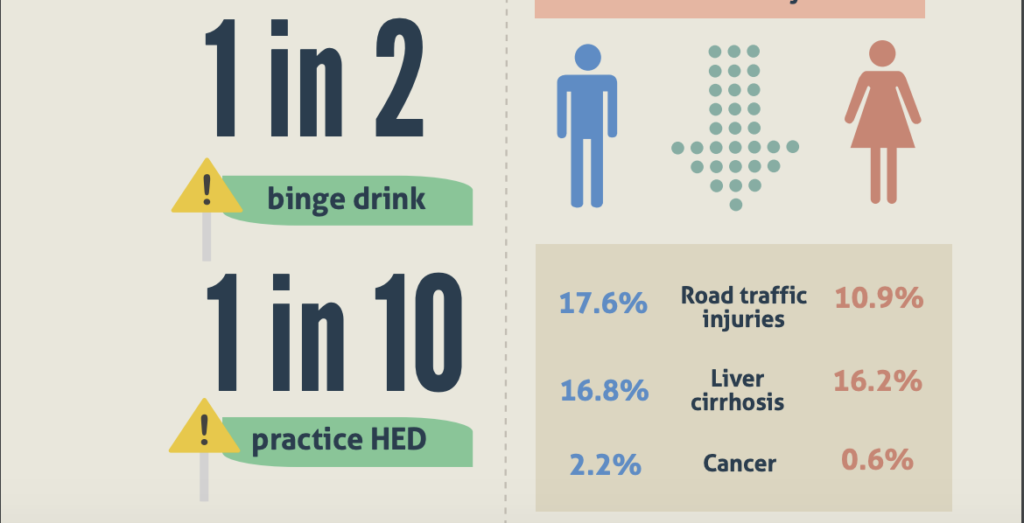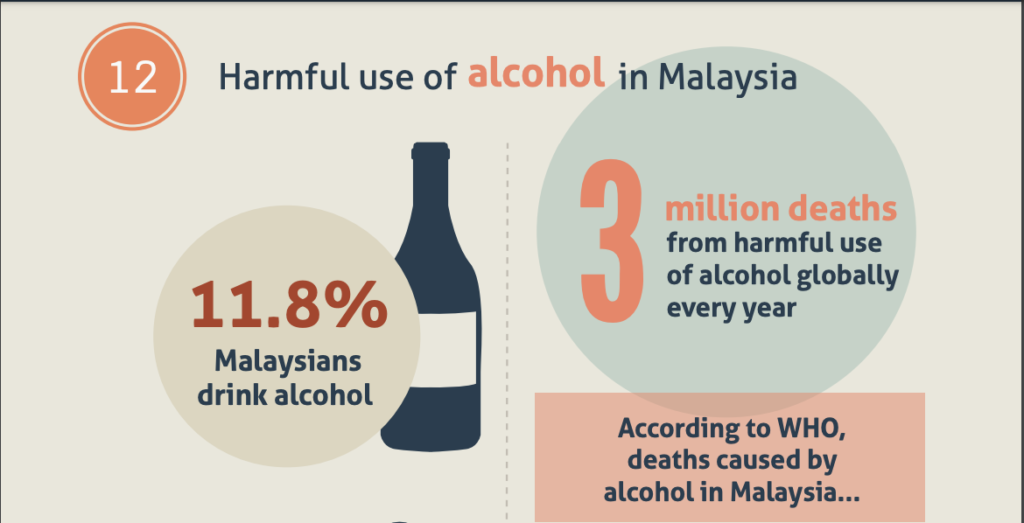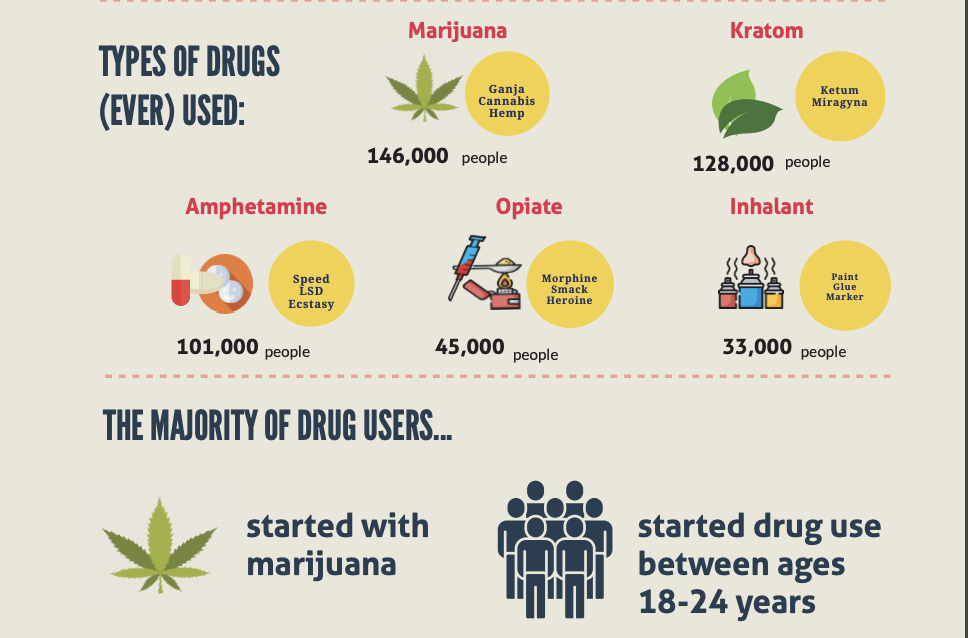KUALA LUMPUR, June 3 — A public health institute asserted that nearly half of alcohol-consuming Malaysians binge drink, almost double that of countries like the United Kingdom (UK) and Indonesia.
The purported 45.8 per cent of Malaysian drinkers who consume excessive alcohol is much higher than the UK’s 27 per cent binge drinking prevalence among drinkers, or Indonesia, another Muslim-majority country like Malaysia, that reported 29 per cent of its drinkers engaged in heavy drinking.
According to the National Health and Morbidity Survey (NHMS) 2019 by the Institute for Public Health (IKU), a research institute under the National Institutes of Health by the Ministry of Health (MOH), the proportion of binge drinking among current drinkers in Malaysia fell to 45.8 per cent last year from 59.4 per cent in 2015, and 50.2 per cent in 2011.
Unlike other countries, the NHMS 2019 did not differentiate its definition of binge drinking between women and men, simply defining it as consuming six or more standard alcoholic drinks in one sitting. The survey by IKU also did not state the regularity of behaviour considered to be binge drinking, such as whether it was defined as happening on at least one day in the past month, or more infrequently.
The NHMS 2019 did not explain its methodology on arriving at its binge drinking findings, or why binge drinking among Malaysian drinkers was much more common than some countries. The full report was not publicly available; only infographics.
Current alcohol consumers make up 11.8 per cent of the Malaysian population, which showed a slight increase in the prevalence of current drinkers compared to data from 2006 (11.1 per cent), 2011 (11.6 per cent), and 2015 (8.4 per cent).
In addition, 10 per cent of those who regularly consume alcoholic beverages in Malaysia practice heavy episodic drinking (HED), which is defined as consuming six or more standard alcoholic drinks in one sitting every week, reported the NHMS 2019.

According to 2018 data from the Office of National Statistics in the UK, 27 per cent of drinkers in Great Britain binge drink on their heaviest drinking days, defined as over eight units of alcoholic drinks per day for men and over six units for women.
The World Health Organization’s (WHO) Global Status Report On Alcohol and Health 2018 reported that Indonesia’s prevalence of HED — which WHO defined as consumption of at least 60 grams or more of pure alcohol on at least one occasion in the past 30 days — was 28.6 per cent among drinkers aged 15 and above in 2016. The proportion of male drinkers was three times that of their female counterparts.
In the US, the prevalence of binge drinking and heavy alcohol use was reported in 2018 at 26.45 per cent among people aged 18 and above in the past month, and 6.6 per cent reported to have engaged in heavy alcohol use (defined as binge drinking for five or more days in the past month), as reported by the US National Institute of Health (NIH).
Binge drinking is defined in the US as a pattern of drinking that brings blood alcohol concentration (BAC) levels to 0.08 g/dL — which typically occurs after four standard alcoholic drinks for women and five drinks for men in about two hours — on at least one day in the past month.

The NHMS 2019 also reported that as many as three million deaths worldwide are linked to harmful use of alcohol every year, and according to WHO, deaths related to alcohol use in Malaysia include road traffic injuries, liver cirrhosis and cancer, with the prior two being the leading cause of death from alcohol use.
The WHO noted that HED is the one of the most significant indicators for acute consequences of alcohol use, such as injuries as cited above.
Drug Use Highest Among Men, Rural, Poor People

The NHMS 2019 reported that drug use in Malaysia remains prevalent even with strict laws in place, including the death penalty by hanging for drug trafficking.
It was reported that as many as 100,000 adults in Malaysia currently abuse drugs illegally, while a staggering 300,000 adults in Malaysia have used drugs at least once in their lifetime. Drug use was found to be highest among rural dwellers, the low-income population, and men.
The survey also provided a breakdown of the types of narcotics used by drug users in Malaysia, which includes 146,000 users of marijuana; 128,000 users of ketum; 101,000 users of amphetamine; 45,000 users of opiates such as heroin; and 33,000 users of inhalants, including paint, glue and markers.
The majority of drug users reportedly began their abuse with marijuana, and the majority started using recreational drugs between the age of 18 and 24.








